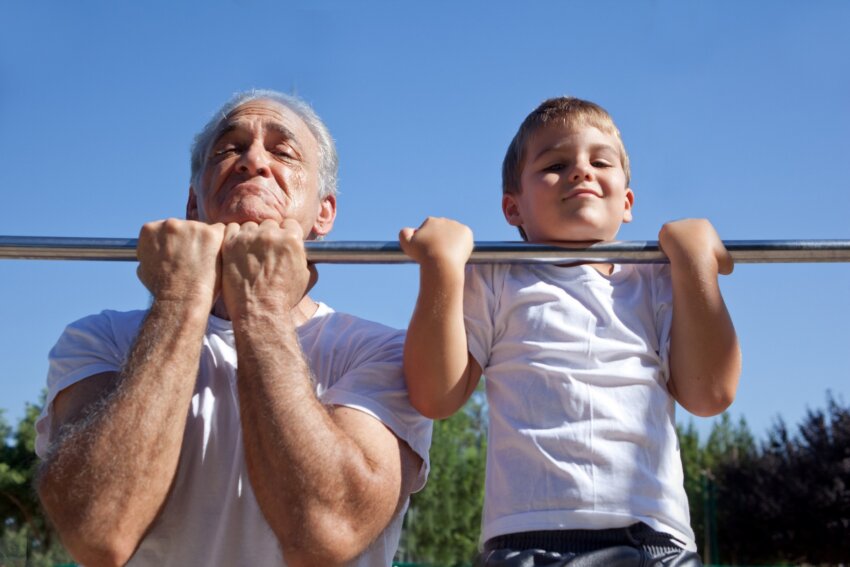Scientists look at the molecular mechanisms behind exercise’s health, anti-aging benefits.
Contact: Will Sansom, (210) 567-2579, sansom@uthscsa.edu
SAN ANTONIO (Jan. 24, 2022) – After a 15-month-long COVID-19 stoppage, a landmark National Institutes of Health effort to detail the exact molecular mechanisms that explain exercise’s health and anti-aging benefits is again under way.
“We’re very excited to reopen this study. The discoveries we make through this extraordinary collaboration may one day allow doctors to prescribe a personalized exercise routine for each individual patient. It may even be possible that scientists use the data we gather to create medications that produce some of the same benefits as physical activity,” said Nicolas Musi, MD, professor of medicine and director of the Sam and Ann Barshop Institute for Longevity and Aging Studies at The University of Texas Health Science Center at San Antonio. Dr. Musi is one of the clinical principal investigators of the study.

The Molecular Transducers of Physical Activity Consortium (MoTrPAC) will collect blood, fat and muscle samples before, during and after exercise from around 2,600 volunteers spread across 11 clinical sites. UT Health San Antonio is enrolling approximately 200 of those volunteers. Researchers will use a complex array of molecular assays to generate data on exercise-responsive biomolecules such as genes, proteins and molecules involved in metabolism, and on molecular signals in cell-to-cell communication.
Researchers are looking for healthy, sedentary people 18 and older. Participants will be randomly assigned into endurance, resistance (weight training) or control groups. The control group members will maintain their normal daily routines. Volunteers in the endurance and resistance training groups will receive 12 weeks of supervised workouts with an exercise trainer and may receive up to $1,500 for completing the study.
One of the major goals of MoTrPAC is to generate a molecular map of exercise. Scientists will examine the impact of endurance and resistance (weight-training) exercise on volunteers who are either sedentary or highly active. The participants’ ages will range from 10 to over 60. The study’s size will account for variations from person to person while revealing differences based on participant demographics like age, race and gender.
The data generated by MoTrPAC will be huge and complex, too large for the consortium scientists to analyze alone. Making the data available to the biomedical research community will generate more new ideas, perspectives and questions about the health benefits of exercise than MoTrPAC researchers could by themselves.
“Each day at UT Health San Antonio, our scientists and staff strive to uncover the triggers of chronic diseases through innovative research projects like MoTrPAC,” Dr. Musi said. “Our goal is to improve people’s health. The data MoTrPAC gathers could help achieve that by laying the foundation for a new era of precision exercise medicine.”
UT Health San Antonio had enrolled three dozen participants before the pandemic-enforced pause. The research center has resumed recruiting and plans to recruit an additional 160 volunteers.
For more information on MoTrPAC, and how you can participate, click https://barshopinstitute.uthscsa.edu/clinical-trials/currently-recruiting/exercise-science/, or call 210-450-3333.
UT Health San Antonio MoTrPAC research is supported by the National Institute of Arthritis and Musculoskeletal and Skin Diseases of the National Institutes of Health through award 5U01AR071150-05.
The University of Texas Health Science Center at San Antonio, also referred to as UT Health San Antonio, is one of the country’s leading health sciences universities and is designated as a Hispanic-Serving Institution by the U.S. Department of Education. With missions of teaching, research, patient care and community engagement, its schools of medicine, nursing, dentistry, health professions and graduate biomedical sciences have graduated 39,700 alumni who are leading change, advancing their fields, and renewing hope for patients and their families throughout South Texas and the world. To learn about the many ways “We make lives better®,” visit www.uthscsa.edu.
Stay connected with UT Health San Antonio on Facebook, Twitter, LinkedIn, Instagram and YouTube.


